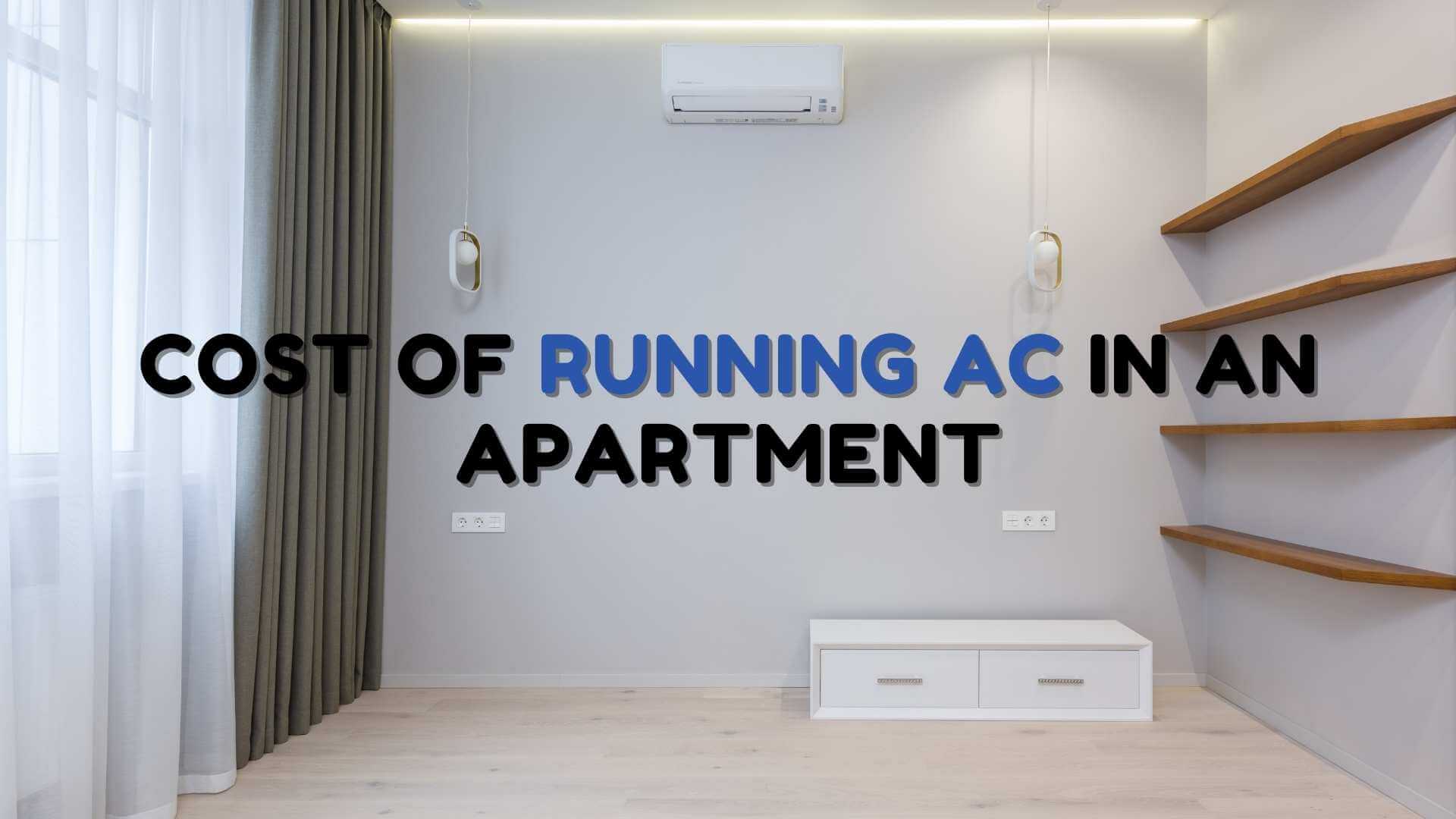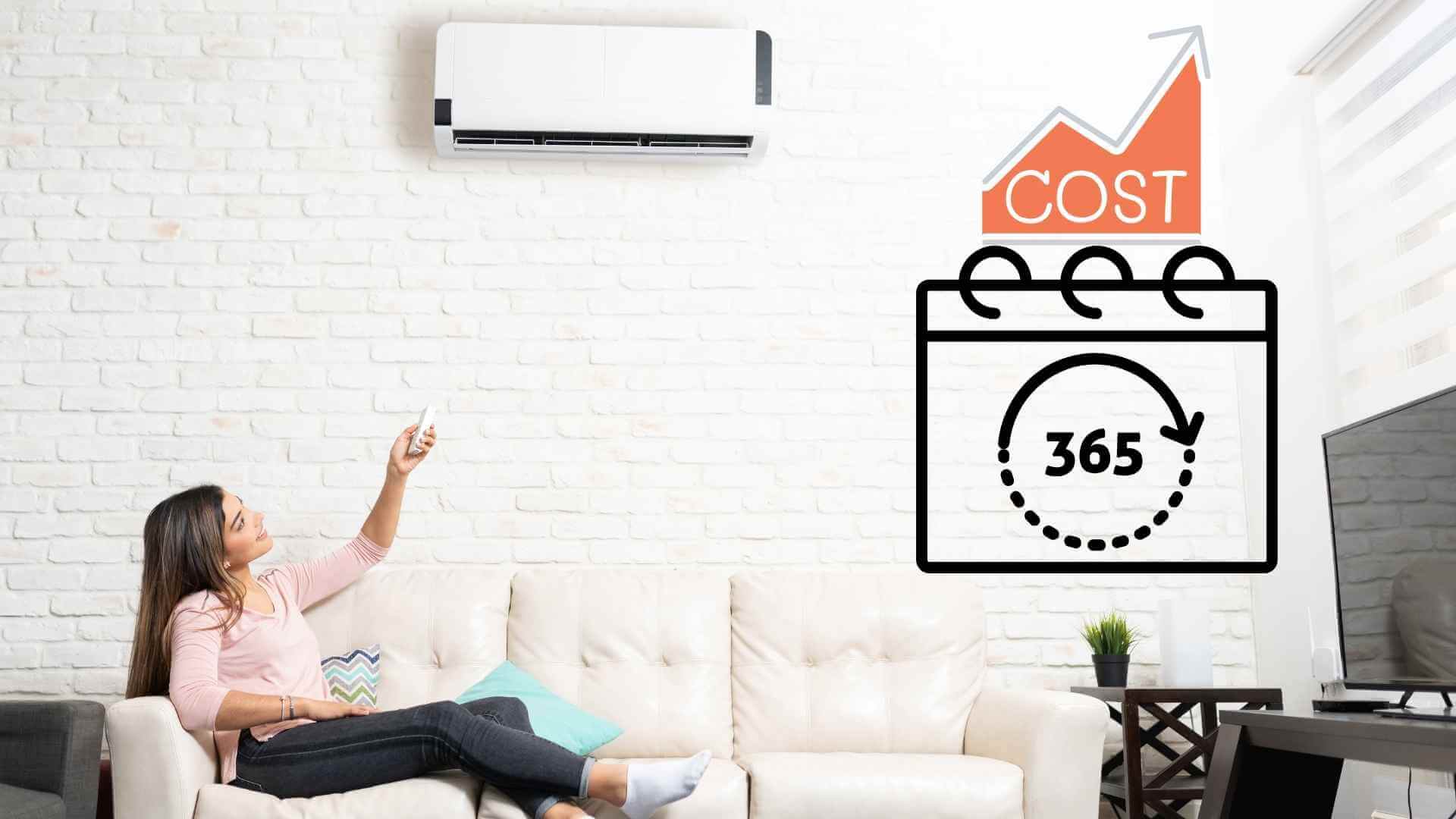Air conditioning (AC) is essential in many U.S. apartments, especially during the scorching summer months. However, understanding the costs involved can be confusing for renters and homeowners alike.
This guide will break down the apartment AC cost in the USA, focusing on factors like electricity cost, energy efficiency, and different types of AC systems. By the end, you will have a clear picture of what to expect on your monthly air conditioning bill and practical tips to keep costs down.
Factors Affecting the Cost of Air Conditioning in an Apartment
1. AC Unit Type: Window, Split, or Central Air
The type of AC unit you use significantly impacts your electricity cost for apartment AC. Each system has different energy usage patterns:
- Central AC: Typically the most expensive to install and operate, but it cools the entire apartment.
- Window AC: More affordable and suitable for cooling small rooms or single areas, but less energy-efficient.
- Split AC Units: A more efficient alternative for apartments with multiple rooms, but they can still be costly in terms of power consumption.
| AC Type | Average Monthly Cost | Pros | Cons |
|---|---|---|---|
| Central AC | $30 – $270 | Cools entire apartment | Higher upfront cost, high energy consumption |
| Window AC | $20 – $55 | Affordable, easy to install | Less energy-efficient, limited cooling capacity |
| Split AC | $17 – $72 | Efficient, effective in rooms | Higher installation cost |
2. Electricity Rates by State in the USA
The electricity rates by state USA are a critical factor in determining your apartment air conditioning expenses. States like Hawaii and California have high electricity rates, which can drastically increase your summer AC bill apartment.
- Hawaii: 42.44¢ per kWh
- California: 23.68¢ per kWh
- Texas: 11.94¢ per kWh
- Florida: 12.73¢ per kWh
- National Average: Approximately 17.45¢ per kWh
This regional variation can lead to substantial differences in cooling costs per month USA.
3. AC Power Consumption and Energy Usage
The AC energy usage apartment depends on the unit’s efficiency and how often it’s used. AC units consume electricity measured in kWh (kilowatt-hours), with a higher SEER (Seasonal Energy Efficiency Ratio) rating indicating better efficiency. Here’s a breakdown:
- Window AC Units: Use between 500 – 1,500 watts per hour.
- Central AC Systems: Use about 3,000 – 5,000 watts per hour depending on the size of the apartment and unit.
- Split Units: Consume around 1,000 – 2,500 watts per hour.
4. BTU and SEER Rating: Impact on Energy Consumption
The BTU requirement for apartment cooling is a key factor in understanding AC power consumption apartment. Larger rooms require higher BTUs (British Thermal Units). A higher SEER rating indicates better efficiency:
- Lower SEER: Less efficient, leading to higher energy consumption.
- Higher SEER: More efficient, reducing energy bills.
For instance, a central AC with a 13 SEER rating consumes more electricity than one with a 20 SEER rating.
Average Monthly AC Cost and Energy Usage
Here’s an apartment cooling energy consumption estimate for different types of AC units:
| AC Unit Type | Power Consumption (per hour) | Monthly Electricity Usage (kWh) | Estimated Monthly Cost (USA Average Rate) |
|---|---|---|---|
| Central Air System | 3,500 – 5,000 watts | 500 – 700 kWh | $85 – $130 |
| Window AC | 500 – 1,500 watts | 100 – 150 kWh | $20 – $45 |
| Split AC | 1,000 – 2,500 watts | 250 – 450 kWh | $40 – $72 |
5. Apartment AC vs. Central Air: What’s the Difference?
When deciding between apartment AC systems and central air, several factors come into play. Here’s a comparison:
| Feature | Apartment AC | Central Air |
|---|---|---|
| Cost | Lower upfront cost | Higher upfront cost |
| Efficiency | More energy-efficient, depending on usage | Less efficient, especially in large apartments |
| Cooling Area | Cools a specific area or room | Cools entire apartment or house |
| Monthly Operating Costs | Lower monthly costs, ideal for small apartments | Higher due to larger area coverage |
| Maintenance Costs | Lower maintenance cost | Higher maintenance cost |
Energy-Saving Tips to Lower Your AC Costs
To reduce your electric bill with AC unit, consider the following energy-saving tips:
- Optimize Thermostat Settings: Set your thermostat at 78°F during the day and 72°F at night for the best balance between comfort and energy efficiency.
- Seal Leaks and Insulate: Proper insulation can reduce the amount of cooling needed.
- Use Fans: Ceiling fans can help circulate cool air and reduce the need to run your AC constantly.
- Regular Maintenance: Clean filters, check refrigerant levels, and have a professional service your AC unit regularly.
- Energy-Efficient AC Units: Consider replacing older, inefficient units with models that have a higher SEER rating.
6. Utility Bills with AC: Rent with Utilities Included
In many apartments, rent with utilities included can simplify your budgeting. However, it’s essential to be aware of how electricity rates and AC usage impact the overall utility bills. When utilities are included, landlords typically factor in the average electricity usage for apartment AC in the rent, so running the AC more frequently may affect the monthly cost.
Cost of Running AC Daily
On average, running an AC unit daily can add anywhere between $1.50 – $6.00 to your electricity bill with AC based on the unit type and usage. Here’s how it breaks down:
- Window Unit: $1.50 per day
- Split AC Unit: $2.50 – $4.00 per day
- Central AC: $5.00 – $6.00 per day
While these costs may seem minimal on a daily basis, they add up quickly over a summer.
Conclusion: Managing Your Apartment’s AC Costs
The cost of running AC in an apartment varies greatly depending on factors like electricity rates, unit type, and usage habits. By understanding these variables and implementing energy-saving practices, you can reduce your monthly air conditioning bill and maintain a comfortable living environment.
Whether you’re dealing with a summer AC bill in your apartment or trying to estimate the apartment air conditioning expenses, using an AC cost calculator USA or consulting with an HVAC professional can help you get a more accurate estimate tailored to your specific needs.
With the right knowledge and a few adjustments, you can optimize your apartment’s cooling energy consumption and keep your electricity costs in check throughout the year.
![AC Bill Calculator [2025] | Official Site](https://acbillcalc.com/wp-content/uploads/2025/07/cropped-acbillcalc-logo-250x79.png)


